Most people love spring bulbs. Daffodils, hyacinths, and tulips planted in the fall reward gardeners who plan ahead with some of the first blooms of spring. However, none of these plants are native to North America. So add some of these native plants to your garden and celebrate the excitement of spring while benefiting nature!
Spring Beauty (Claytonia virginiana)
A wonderful little gem to grace a shade garden, spring beauty forms low colonies of small, white to pink flowered plants. As spring warms to summer, Spring Beauty goes dormant, so use them with other woodland plants that will fill their spot. Claytonia appreciates part sun to shade, and moist, well-drained soil.

Wild Bleeding Heart (Dicentra eximia)
This beautiful spring bloomer has heart-shaped flowers on drooping stems over finely-cut, blue-green leaves. It starts blooming in April, and in cooler climates may actually flower all season. In warmer areas, it may take a break in summer, and re-bloom again in the fall. Don’t mistake our Wild Bleeding Heart with the Asian species, which is larger, but goes dormant in summer.
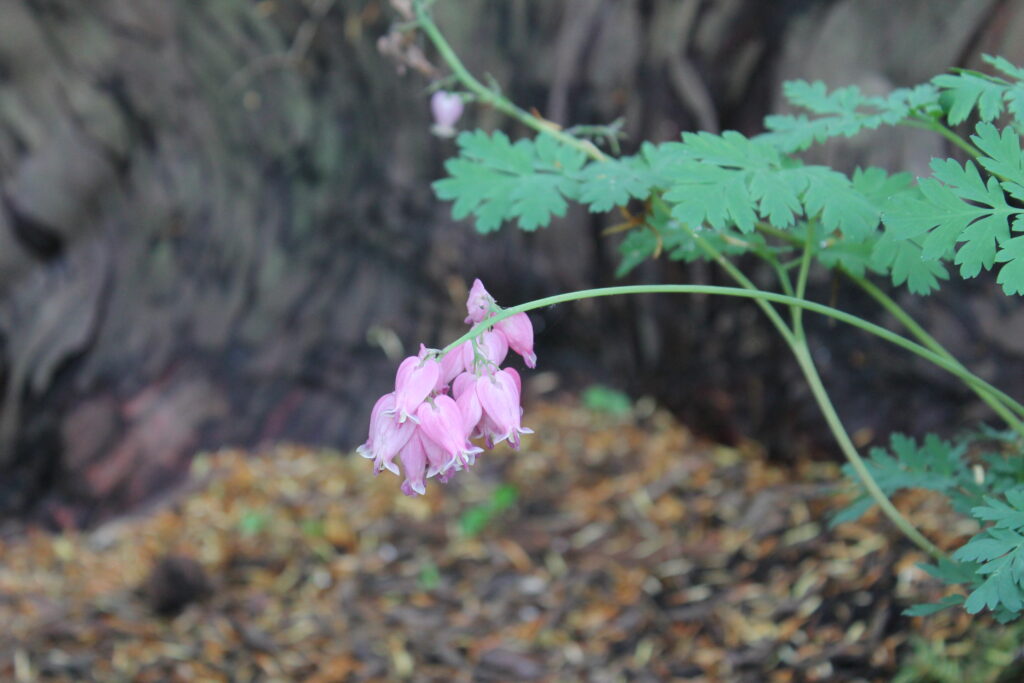
Robin’s Plantain (Erigeron pulchellus)
Robin’s Plantain is an overlooked native plant that blooms in spring and then performs as a groundcover the rest of the year. It grows in many different garden soils, forming a mat in areas of part sun to shade. So try it in areas where you want spring blooms and also want to out-compete weeds.
Fun fact: according to Missouri Botanical Garden the Genus name comes from the Greek words eri meaning early and geron meaning old man. This is in reference to the early bloom time and downy plant appearance suggestive of the white beard of an old man.
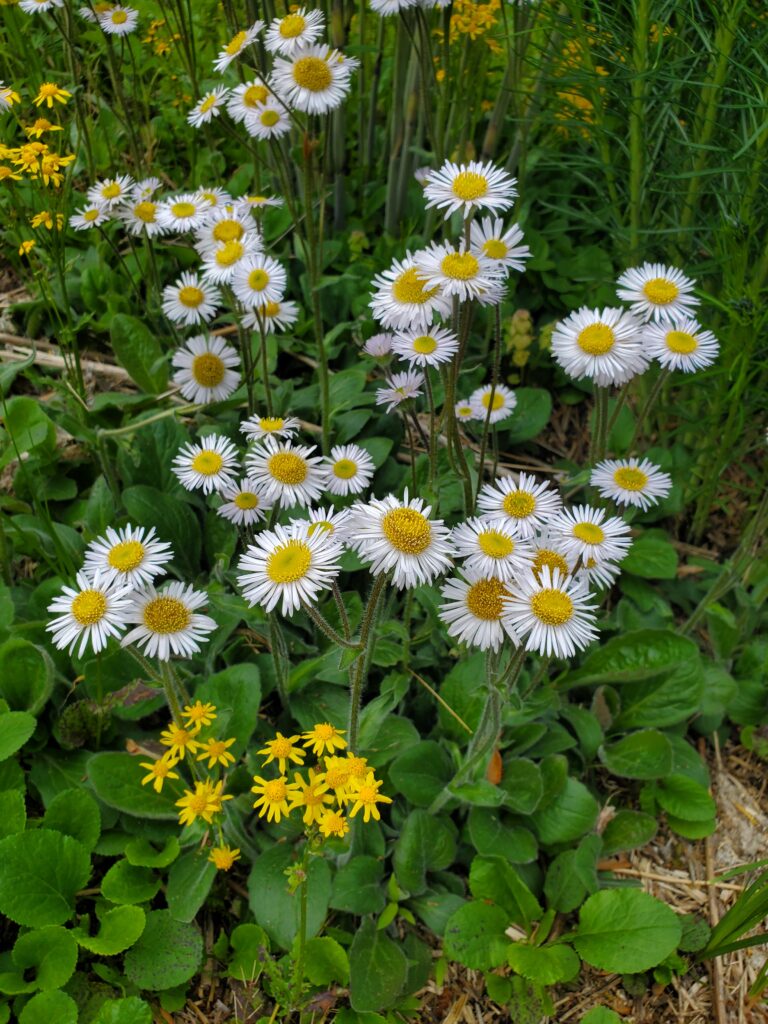
Trout Lily (Erythronium americanum)
With pretty mottled leaves (resembling a brook trout) and small yellow lily-shaped flowers, you will be delighted to find Trout Lily in your spring garden. Trout Lily is beginning to be available in the trade, so look for it at specialty nurseries. A spring ephemeral, plant Erythronium in woodland conditions with plants that will fill in after they go dormant.
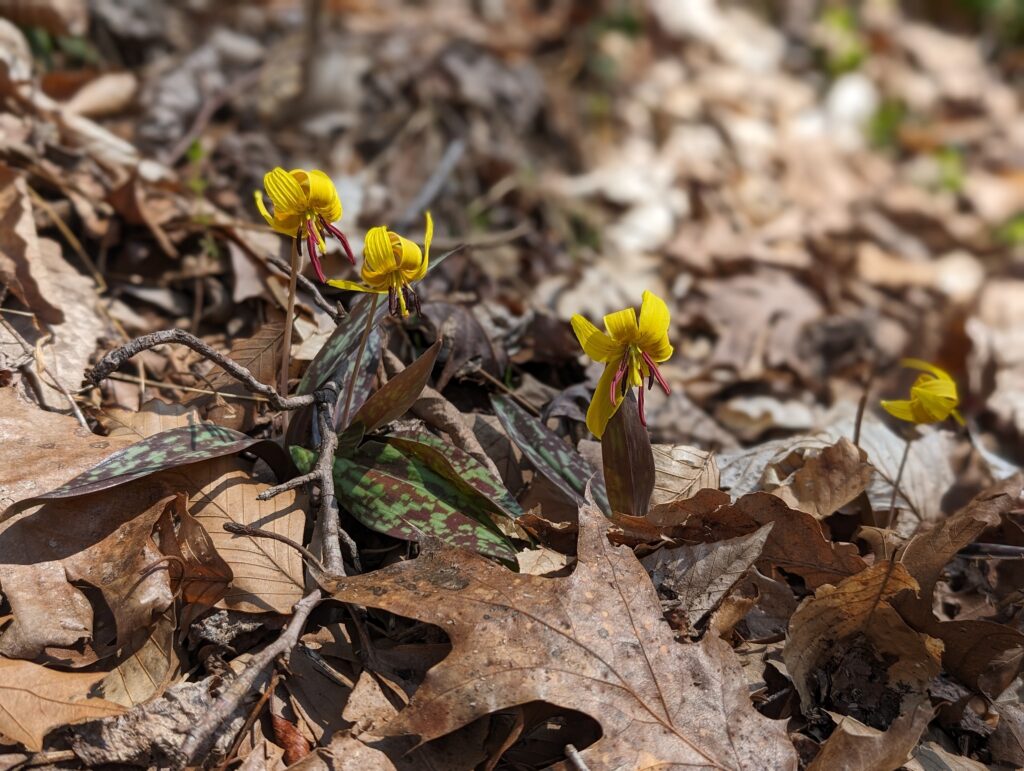
Dwarf Crested Iris (Iris cristata)
This plant should be in every garden with the right conditions. A miniature iris about 8 inches tall, Dwarf crested iris blooms blue or white on clean foliage which forms a nice mass with great texture. Plant it in morning sun or full shade with moist but not wet soil. Then enjoy the flowers in the spring and the foliage all year.
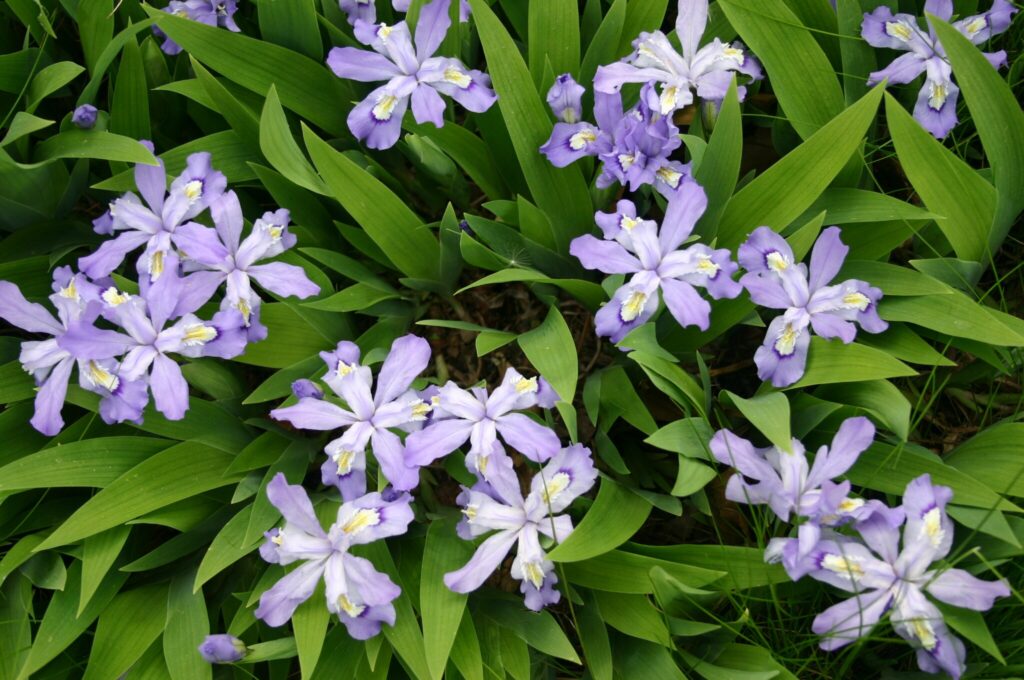
Virginia Bluebells (Mertensia virginica)
Although naturally occurring along streams and in moist woods, Virginia Bluebells are quite at home in many garden settings. With large gray-green leaves, and pink buds that open to true blue flowers on 12-18” stems, Virginia Bluebells can stand up to any tulip or daffodil. Plant Mertensia in part shade with moist soil and find out why it is one of America’s favorite wildflowers.
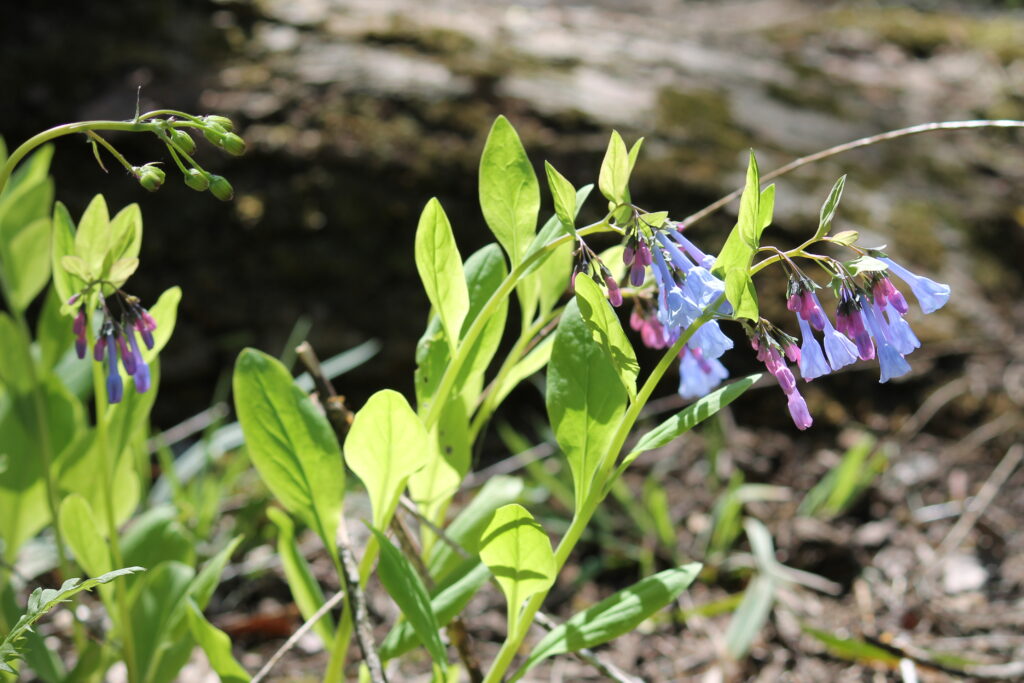
Bloodroot (Sanquinaria canadensis)
A beautiful wildflower, bloodroot is one of the first spring wildflowers to bloom. Like other flowers in the poppy family, its white flowers with yellow centers soon fade. However, the blue-green deeply cut foliage is also quite attractive. It gets its name from the red juice that comes from the underground stem, which was used by Native Americans as a dye for baskets, clothing, and war paint, as well as for insect repellent.
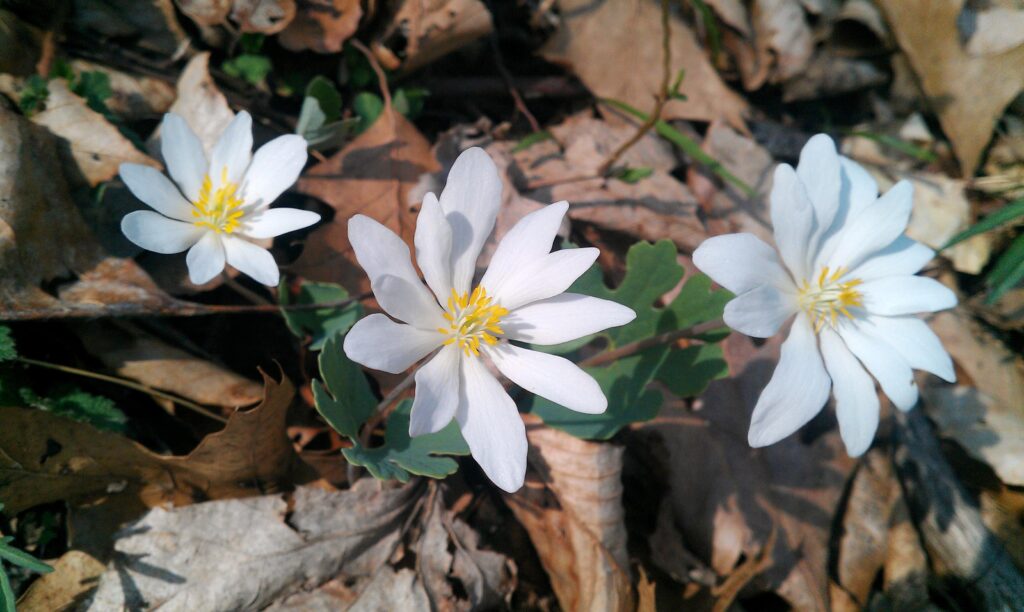
Although all of these plants are garden worthy, they may not be easy to find in your local garden center. If you ask, your local garden center may order them for you, or you can check the following sources:
Redbud Native Plant Nursery
Media, Pennsylvania
610.892.2833
Sunshine Farm and Gardens
Renick, West Virginia
(304) 497-2208
So as you plan your beautiful spring garden, instead of traditional bulbs, consider something unusual, our native spring wildflowers.

